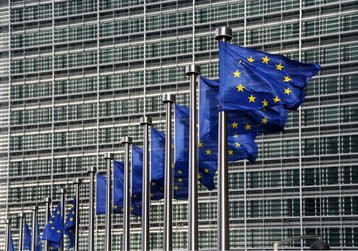Ten years ago, European bureaucrat, policy analyst and editor-in-chief of Energy Efficiency Journal, Paolo Bertoldi, started an industry project hoping to limit data centers’ effect on the environment.
Prior to 2007, Bertoldi organized roundtables with European government department representatives and manufacturers, discussing how to improve energy efficiency in the data center - from the manufacturing of components to operational practices and IT, power and cooling equipment.
The text of the framework offers advice on day-to-day operations, refurbishment, and building an energy efficient data center from scratch. It asks that participants monitor their facilities, engage in an action plan to reduce their energy consumption, and keep it low over time.
Not so controlling after all?
The effort is not exclusive to EU companies, and involved parties include the Carbon Trust, Energy Star, the Green Grid, specialist vendors, facility operators, industry bodies and equipment manufacturers.
The consortium finally released the EU Code of Conduct for Energy Efficiency in Data Centres in November 2008.
So, as 2018 unfolds, what can be said for how the guidelines have impacted the data center industry?
We’re now on version 8.1.0, written last year, and over 300 data centers have joined the initiative. At the recent DCD>Zettastructure event at the Old Billingsgate in London, contributors and industry members gathered to take stock of how far the set of guidelines has evolved in the past ten years, and where it is expected to go from here.
Rather than putting red tape in the way of economic benefit, as was feared when the code of conduct was first published, the framework is being promoted as a way of keeping a green standard in industry hands and ensuring mutually beneficial ends, i.e. reducing greenhouse gas emissions on the one hand, and saving costs on the other, by establishing best practices.
John Booth of CarbonIT, one of the co-authors of the document, said: “In the EU we have 100 standards that apply [to data centers], including the EPI and the Tier V standards that aren’t standards.
“But ultimately, it’s a standard, you don’t have to abide by a standard. What I will say is that it’s probably not a good thing not to be aligned with your competitors in this space.”
For Lex Coors, an ardent supporter of the Code of Conduct, it’s a no-brainer, as operators having joined have all, without fail, saved on costs, and this, rather than a guilty conscience, is what drives the decision to “go green.” The question one must ask, he said, is: “Do you want to wait, and see what happens, or do you want to sit at the table and make decisions?”
The idea of making the standard enforceable is not just undesirable, but, according to Tomoo Misaki, senior researcher and senior manager at the Nomura Research Institute, also highly impractical, as standardization would be both difficult to implement, and difficult to enforce.
“There was a voice in a Brussels meeting with Paolo, saying ‘why don’t we make an EU-wide standardized rule?’ But across Europe that’s impossible. The Code of Conduct is best practice and recommendations, that’s it.”
One drawback to the possible expansion of the program is that the text only exists in English, said Mark Acton, head of data center technical consulting at CBRE, who also helped write the latest version of the CoC. “This can get in the way of adoption for countries outside of the Anglophone world, especially so as it is a technical document,” he said.
But as adoption of the Code of Conduct grows, and the regulation of greenhouse gas emissions across all industries in the EU looms, the group unanimously agrees that it is in operators’ best interests to follow the program, sooner rather than later.
A version of this article appeared in the December/January issue of DCD Magazine. Subscribe to the digital and print editions here:



